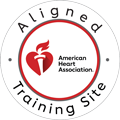Breaking Down the ACLS Algorithm
Overview of ACLS
Advanced Cardiovascular Life Support (ACLS) is a critical set of guidelines used by healthcare professionals to manage life-threatening cardiovascular emergencies. ACLS is designed to address severe cardiac and respiratory conditions, including cardiac arrest, stroke, and myocardial infarction. The importance of ACLS lies in its ability to provide a structured approach to resuscitation, improving patient outcomes during critical moments. By adhering to the ACLS algorithm, healthcare providers can deliver effective interventions that enhance the chances of survival and recovery in emergencies.
Importance of Understanding the ACLS Algorithm
Understanding the ACLS algorithm is essential for healthcare providers who need to perform advanced resuscitation techniques. The ACLS algorithm guides the identification of cardiac arrest, the initiation of resuscitation efforts, and the application of advanced treatments. Proper training in this algorithm is crucial, as it directly impacts patient outcomes. Effective implementation of ACLS protocols can mean the difference between life and death, making it imperative for providers to be thoroughly familiar with these guidelines.

Components of the ACLS Algorithm
Basic Life Support (BLS) as the Foundation
The ACLS algorithm incorporates several components, starting with Basic Life Support (BLS), which serves as the foundation for advanced interventions. BLS principles, such as early recognition of cardiac arrest and immediate initiation of chest compressions, are integral to the ACLS protocol. These basic steps set the stage for more advanced measures, ensuring that initial resuscitation efforts are carried out effectively.
Call Us Now
Get the Best CPR Class in Kansas City Today!
Primary ACLS Survey
The primary ACLS survey builds upon the BLS foundation by introducing the ABCD approach: Airway, Breathing, Circulation, and Defibrillation. This approach ensures that each critical aspect of resuscitation is addressed systematically. Maintaining an open airway, ensuring adequate ventilation, establishing circulation, and delivering defibrillation are essential steps in the ACLS algorithm, each contributing to the overall goal of restoring effective heart function and circulation.
Secondary ACLS Survey
The secondary ACLS survey involves a more detailed assessment of the patient’s condition, focusing on differential diagnosis. This includes evaluating potential underlying causes of cardiac arrest, referred to as the H’s and T’s: Hypovolemia, Hypoxia, Hydrogen ion (acidosis), Hyper-/hypokalemia, Hypothermia, Toxins, Tamponade (cardiac), Tension pneumothorax, Thrombosis (coronary and pulmonary), and Trauma. Identifying and addressing these causes is critical for effective resuscitation and preventing further complications.
Key Steps in the ACLS Algorithm
Early Recognition and Management of Cardiac Arrest
Key steps in the ACLS algorithm include early recognition and management of cardiac arrest. Rapid identification of cardiac arrest allows for immediate activation of the emergency response system, which is crucial for timely intervention.
Effective Chest Compressions and Defibrillation
Once cardiac arrest is confirmed, healthcare providers must perform high-quality chest compressions and, if necessary, defibrillation. High-quality chest compressions are essential for maintaining circulation to vital organs, while defibrillation can restore a viable heart rhythm in cases of ventricular fibrillation or pulseless ventricular tachycardia.
Advanced Airway Management
Advanced airway management is another critical component of the ACLS algorithm. Proper airway management ensures adequate oxygenation and ventilation. Healthcare providers may need to use advanced airway devices, such as endotracheal tubes or supraglottic airway devices, to maintain a patent airway. Proper placement and management of these devices are essential to prevent complications and optimize patient outcomes.
Administration of Medications
Medication administration is also a key aspect of the ACLS algorithm. Common medications used in ACLS include Epinephrine, which enhances coronary and cerebral perfusion during CPR; Amiodarone, which treats arrhythmias; and Atropine, used for bradycardia. The timing and dosage of these medications must be carefully managed according to the ACLS protocol to ensure their effectiveness.
Post-Cardiac Arrest Care
Post-cardiac arrest care focuses on stabilizing the patient after the return of spontaneous circulation (ROSC). This phase involves targeted temperature management to prevent neurological damage, continuous monitoring to detect any changes in the patient’s condition, and ongoing treatment to address any underlying issues that may have led to cardiac arrest.
Importance of Regular ACLS Training and Certification
Regular ACLS training and certification are crucial for healthcare providers. ACLS guidelines and protocols are updated regularly to reflect the latest research and best practices. Staying current with these updates is essential for delivering the highest standard of care. Hands-on training enhances skill proficiency, allowing providers to practice and refine their techniques in realistic scenarios. CPR Kansas City offers practical, hands-on ACLS training in a supportive environment, ensuring that participants are well-prepared for real-life emergencies.
Why Choose CPR Kansas City for ACLS Certification?
Choosing CPR Kansas City for ACLS certification offers several advantages. As an AHA-accredited provider, CPR Kansas City ensures high-quality training that meets national standards. The training options include initial certification and renewal courses, catering to providers at all levels of experience. Experienced instructors deliver the training, providing valuable insights and guidance. Additionally, the convenient location in Kansas City and flexible scheduling options make it easier for busy healthcare professionals to complete their training.
Conclusion
The ACLS algorithm is a critical tool for healthcare providers in managing life-threatening cardiovascular emergencies. By following the structured, evidence-based steps of the ACLS protocol, providers can quickly assess the situation, deliver appropriate interventions, and maximize the chances of patient survival.
If you are a healthcare professional, you must obtain and maintain your ACLS certification. This ensures you are prepared to respond effectively to cardiac crises and provide the highest level of emergency care.
For top-quality ACLS certification in CPR Kansas City, enroll at CPR Kansas City, an American Heart Association training site. Their ACLS courses provide hands-on, stress-free training to healthcare providers, equipping them with the knowledge and skills to implement the ACLS algorithm with confidence.
In addition to ACLS certification, consider obtaining your CPR certification in CPR Kansas City. Knowing how to perform high-quality CPR is a vital skill that can mean the difference between life and death in cardiac emergencies.
Don’t wait – sign up for ACLS certification and CPR certification in CPR Kansas City today. Be the healthcare provider your patients can count on in their time of greatest need.


